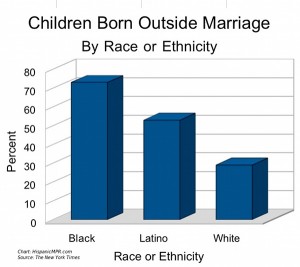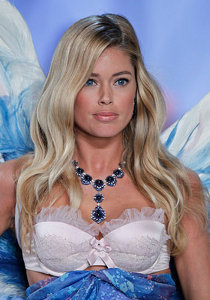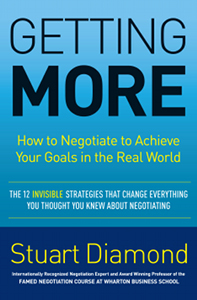Posted by Elena del Valle on March 12, 2012

Luz Agudelo, executive producer, Onda Musica Y Sonido
Photo: Onda Musica Y Sonido
A podcast interview with Luz Agudelo, executive producer, Onda Musica Y Sonido is available in the Podcast Section of Hispanic Marketing & Public Relations, HispanicMPR.com. During the podcast, she discusses Latino music in advertising with Elena del Valle, host of the HispanicMPR.com podcast.
Luz is responsible for working with the Comma team to create original music for commercials, TV and movies and the team of a sister company Particle in overseeing its production. A Colombian native she grew up in South Florida and was motivated by a new Latino generation seeking inspiration from their own roots and the abundance of other backgrounds in the cultural community.
Prior to working with Onda Musica Y Sonico she worked with AKPD Message and Media. Luz contributed her production expertise to television and radio ads for the Obama For America campaign. Luz has produced many television and radio ads and directed several Spanish and Portuguese radio spots. She most recently worked on independent narrative and documentary films and the development of a two-week workshop taught at a Guatemalan orphanage.
To listen to the interview, scroll down until you see “Podcast” on the right hand side, then select “HMPR Luz Agudelo” click on the play button below or download the MP3 file to your iPod or MP3 player to listen on the go, in your car or at home. To download it, click on the arrow of the recording you wish to copy and save it to disk. The podcast will remain listed in the March 2012 section of the podcast archive.
Posted by Elena del Valle on March 9, 2012

Search Engine Optimization Secrets book cover
Photos: Erik Dafforn, Danny Dover
As online portals gain momentum and the digital world around us continues to morph so fast it’s hard to know where it will settle one priority remains constant for many: maximizing their online presence through search engine optimization strategies. How to do that most effectively within a reasonable budget and in a timely fashion is the topic of much debate and many books.
There are a number of titles for do-it-yourself types and beginners and myriad articles that outline the basics. For those who already understand the essentials of search engine optimization, commonly referred to as SEO, a specialized title may be helpful. Search Engine Optimization Secrets (Wiley Publishing, $34.99) by Danny Dover with insights from Erik Dafforn, a 435-page softcover book written for those who already have a basic understanding of search engine optimization issues and want to improve their knowledge and for consultants who want to sell SEO services, is one such book.

Erik Dafforn, co-author, Search Engine Optimization Secrets
“From various studies, we believe about 90 percent of the Fortune 1000 have search programs in place, but we also believe the success rates fluctuate wildly, depending on whether the brand simply defends their ‘branded’ queries, or whether they aggressively pursue non-branded search traffic as well. Larger brands, those that can afford significant TV and radio reach, often have a search budget that represents about 10-25 percent of their overall marketing spend, while smaller (non-TV) clients tend to have a greater percentage devoted to search, anywhere from 25-75 percent of the overall marketing budget,” said Dafforn by email in response to a question about the percent of Fortune 1,000 companies that allocate resources to search engine optimization. “Their budgets for paid and organic search grow as they realize that budgets for other forms of advertising, such as yellow pages, outdoor, and direct mail, are often unable to match the measured results and offer the same ROI as search does.”
Published in 2011 the book is divided into 14 chapters and one appendix: Understanding Search Engine Optimization, Relearning How You See the Web, Picking the Right SEO Tools, Finding SEO Problems, Solving SEO Problems, SEO Best Practices, The SEO Consulting Process, Comprehensive Site Audit (Informational Website), Comprehensive Site Audit (E-Commerce Website), Understanding the SEO Industry, Search Engine Verticals, Optimizing for Alternative Search Engines, SEO Resources and Test, Test, Test.

Danny Dover, author, Search Engine Optimization Secrets
“Search Engine Optimization (SEO) is a fundamental strategy for any business that offers a product or service that can be researched or purchased online,” said Dover by email in response to a question about how knowledge of search engine optimization strategies is beneficial to business executives. “While SEO as a strategy takes a long to fully implement, it is essentially free and fantastic for driving conversions.”
The authors discuss SEO issues for practitioners in detail, outlining steps and providing examples of reports and tools of the trade. Dover is the former lead of SEO at SEOmoz.org. Daforn is executive vice president and director of Organic SEO for Intrapromote.

Click to buy Search Engine Optimization (SEO) Secrets
Comments:
Filed Under: Books
Posted by Elena del Valle on March 7, 2012

Children Outside Marriage Trends – click to enlarge
Sellers of products and services to married couples having children likely have noticed their target audience has changed significantly in the past few decades. In 2009, in the United States, although 59 percent of women married before having children when it came to younger women more than half had children out of wedlock. Also, two thirds of children were born to women under 30 years old, according to new federal data on births and marriages and Childbearing Outside of Marriage: Estimates and Trends in the United States, a research brief from Child Trends.
In the United States, although 52 percent of the out of wedlock births are to parents living together such unions are less stable than marriages; and children born to unwed mothers are more likely to be poor, fail in school and suffer from behavioral problems, according to Child Trends, a nonprofit, nonpartisan research center that studies children.
From a big picture perspective 92 percent of college educated women are married when they have a child while 62 percent of women with some post-secondary studies, and 43 percent of women with high school diploma or less are married when they give birth. At the same time 73 percent of black children are born to unwed mothers, while 53 percent of Latino children and 29 percent of whites are born outside marriage.
Being born to a single or unmarried mother went from being the exception 30 years ago to being common today. In 1980, the likelihood that a child would be born to unmarried parents was 18 percent; now it is 41 percent.
“It is hard to say what will happen. However, preliminary data from 2010 show a slight decline in the percentage of births occurring outside of marriage. It is possible that we have reached a plateau, or perhaps levels will continue to decline. We won’t know for several more years. Nonetheless, levels of nonmarital childbearing remain high and I don’t really expect that we will see a huge surge in marriage anytime soon. Given that many of these births occur to two parent families, to cohabiting parents, I think we should work to promote stability in cohabiting unions, as well as marriage. Additionally, we should make sure that children have access to resources from both parents,” said Elizabeth Wildsmith, research scientist, Child Trends, by email when asked about trends for the next two years.
Women college graduates resist the unwed mother trend. Increasingly, they are the most likely to marry before bearing children, according to a recent The New York Times article (see Half of Births under age 30 are by unwed).
Posted by Elena del Valle on March 5, 2012

The PixiGlow Collection sold only at Target
Photos: Target, Victoria’s Secret
At what age do girls begin wearing make up? Perhaps because adult women are spending less on beauty products cosmetics makers are increasingly targeting tween girls between nine and twelve as well as older teens aged 13 to 17. Nearly half of young girls and many of their parents, however, don’t think the girls are old enough to wear make up, according to Teens’ and Tweens’ Beauty Market US December 2011, a report resulting from a Mintel survey.
From 2007 to 2009, girls aged 8 to 12 who said they regularly use mascara and eyeliner increased to 18 percent from 10 percent for mascara, to 15 percent from 9 percent for eyeliner and to 15 percent from 10 percent for lipstick, according to a new report from the NPD Group, a consumer research company. Women, on the other hand, are wearing less make up. Perhaps because of the downturn in the economy women appear to be cutting back on beauty products to save money and unemployed women may be less inclined to apply make up every morning, according to the NPD report.
Researchers at Mintel believe marketers who want to win over young shoppers should offer products that are subtle in appearance while at the same time safe for young skin; they believe that body lotion and nail polish are the most likely to gain acceptance among have tweens and their parents.

A Victoria’s Secret runway model with “wings”
Responses to the survey indicate teens like CoverGirl, Maybelline, Wet n Wild, Victoria’s Secret and Avon products while tweens favor Bath & Body Works for body lotion. A spokesperson for Victoria’s Secret replied to an email question about the company’s percentage of beauty products sales to girls aged nine to seventeen and best selling products for this market segment as follows: “Unfortunately I’m unable to provide this information.”
Two relative newcomers targeting young girls with affordable products were mentioned in the Mintel report, Geogirl, a line sold at WalMart and promoted as environmentally responsible; and PixiGlow, inspired by Tinker Bell and sold at Target stores.
Petra Strand, creator of the Pixi cosmetics line, teamed with The Walt Disney Co. to design the PixiGlow collection. To develop the vintage look of the line Strand worked closely with character artist John Quinn. Products priced between $8 and $34 are available online are are expected to become available at Target stores beginning March 2012. According to the retailer’s website, the PixiGlow extension line offers six color cosmetics exclusively at Target: Catching Shadows Crayon ($18), Fairy Dust ($14), Fairy Face Palette ($34), Magic Tink Tint ($16), Straight On ‘til Morning Liner ($15), and Pirouette Pink Nail Colour ($8).

Willa lip gloss trio
“While I can’t say exactly what our best selling tween/teen beauty product is, I can tell you that Target offers a range of affordable cosmetics that appeal to tweens who are developing their individual style and beginning to experiment with makeup. Brands that appeal to the tween guest include Target’s exclusive Hello Kitty beauty collection, Caboodles, Wet & Wild and e.l.f. We also anticipate that the forthcoming tween natural skincare line Willa will be popular, said Evan Miller, spokesperson for Target. “PixiGlow, while created with a more mature beauty guest in mind, does appeal to our younger guest as well because of the link to Tinkerbell and Disney.”
According to the Mintel report, the least frequent users of makeup were tween girls between 9 and 12 and the most frequent daily users of cosmetics were those aged 15 to 17.
Posted by Elena del Valle on March 2, 2012

Getting More book cover
Photos: Sullivan and Partners
Stuart Diamond, a Pulitzer Prize Winner and Wharton School of Business professor who taught negotiation to 30,000 people in 45 countries, believes obtaining the most out of a negotiation varies with the situation. Although it may sometimes seem counter intuitive, good negotiations are about more than the familiar win-win or win-loose approaches, according to Diamond. In Getting More: How to Negotiate to Achieve Your Goals in the Real World (Crown Business, $26), a 400-page hardcover book published in 2010, Diamond outlines his situation specific approach to negotiation in 16 chapters.
Based on years of personal experience and the experience of his students, including 400 anecdotes in the book, he believes that: focusing on your goals, being knowledgeable about the other party and making human contact is key to success; emotion destroys negotiation; preparing, even briefly, is essential; dealing with the decision maker is necessary; acknowledging the other party’s power and position may be helpful; an incremental strategy can be most productive; being yourself and transparent is conducive to good negotiations; constant communication is powerful; identifying the source of the problem and converting it into an opportunity can lead to getting more in the negotiation; celebrating differences can be conducive to better negotiations; using power in a negotiation may harm a relationship, and result in retaliation and loss of credibility.

Stuart Diamond, author, Getting More
To get more when negotiating he relies on emotional sensitivity, clear goals, relationships, being incremental and viewing each situation independently; trusting while insisting on commitments in return. According to his biography, Diamond has advised executives from Google, Microsoft, JP Morgan, and Prudential as well as managers from more than 200 of the Fortune 500 countries.

Click to buy Getting More
Comments:
Filed Under: Books






















